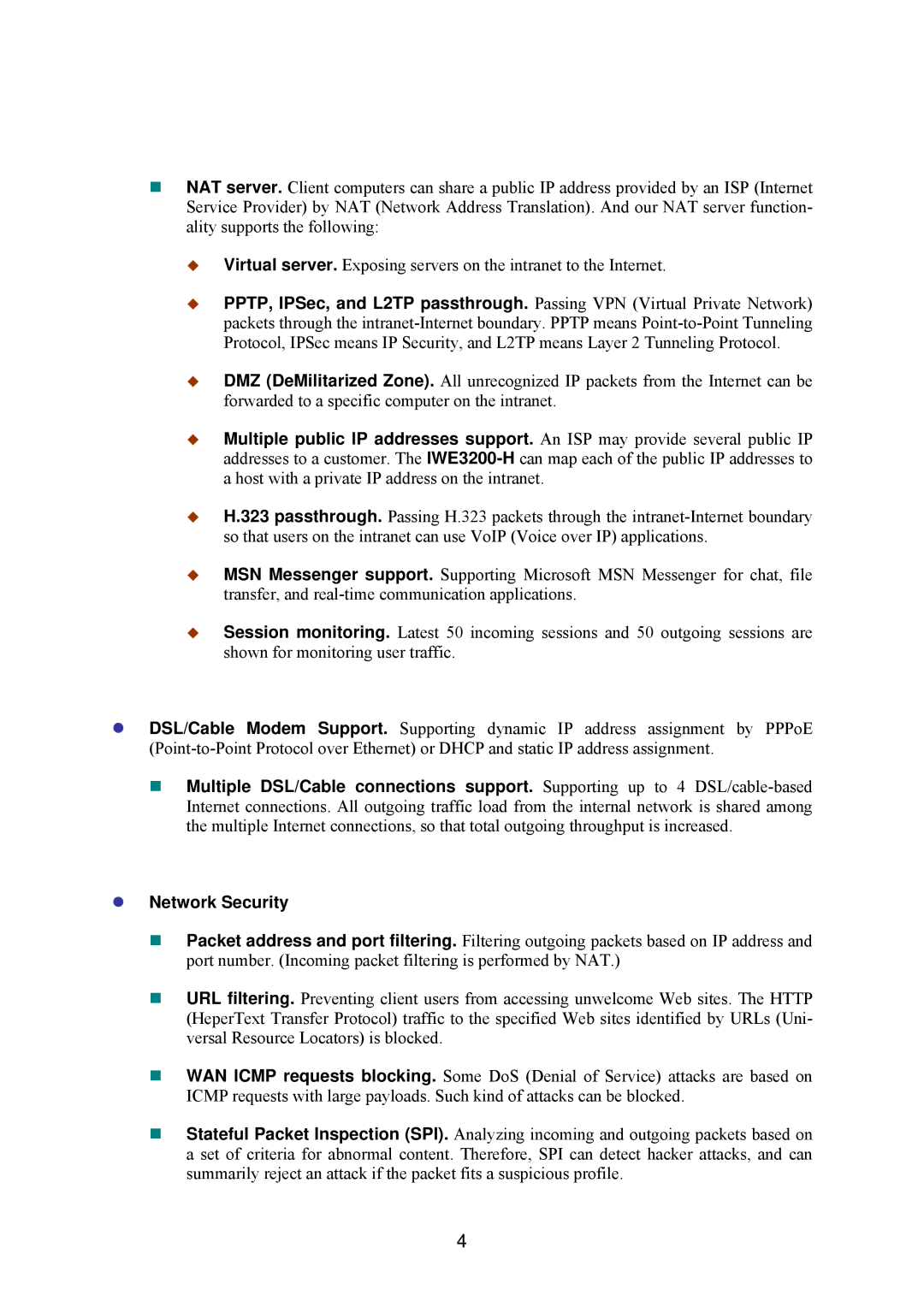NAT server. Client computers can share a public IP address provided by an ISP (Internet Service Provider) by NAT (Network Address Translation). And our NAT server function- ality supports the following:
Virtual server. Exposing servers on the intranet to the Internet.
PPTP, IPSec, and L2TP passthrough. Passing VPN (Virtual Private Network) packets through the
DMZ (DeMilitarized Zone). All unrecognized IP packets from the Internet can be forwarded to a specific computer on the intranet.
Multiple public IP addresses support. An ISP may provide several public IP addresses to a customer. The
H.323 passthrough. Passing H.323 packets through the
MSN Messenger support. Supporting Microsoft MSN Messenger for chat, file transfer, and
Session monitoring. Latest 50 incoming sessions and 50 outgoing sessions are shown for monitoring user traffic.
zDSL/Cable Modem Support. Supporting dynamic IP address assignment by PPPoE
Multiple DSL/Cable connections support. Supporting up to 4
zNetwork Security
Packet address and port filtering. Filtering outgoing packets based on IP address and port number. (Incoming packet filtering is performed by NAT.)
URL filtering. Preventing client users from accessing unwelcome Web sites. The HTTP (HeperText Transfer Protocol) traffic to the specified Web sites identified by URLs (Uni- versal Resource Locators) is blocked.
WAN ICMP requests blocking. Some DoS (Denial of Service) attacks are based on ICMP requests with large payloads. Such kind of attacks can be blocked.
Stateful Packet Inspection (SPI). Analyzing incoming and outgoing packets based on a set of criteria for abnormal content. Therefore, SPI can detect hacker attacks, and can summarily reject an attack if the packet fits a suspicious profile.
4
